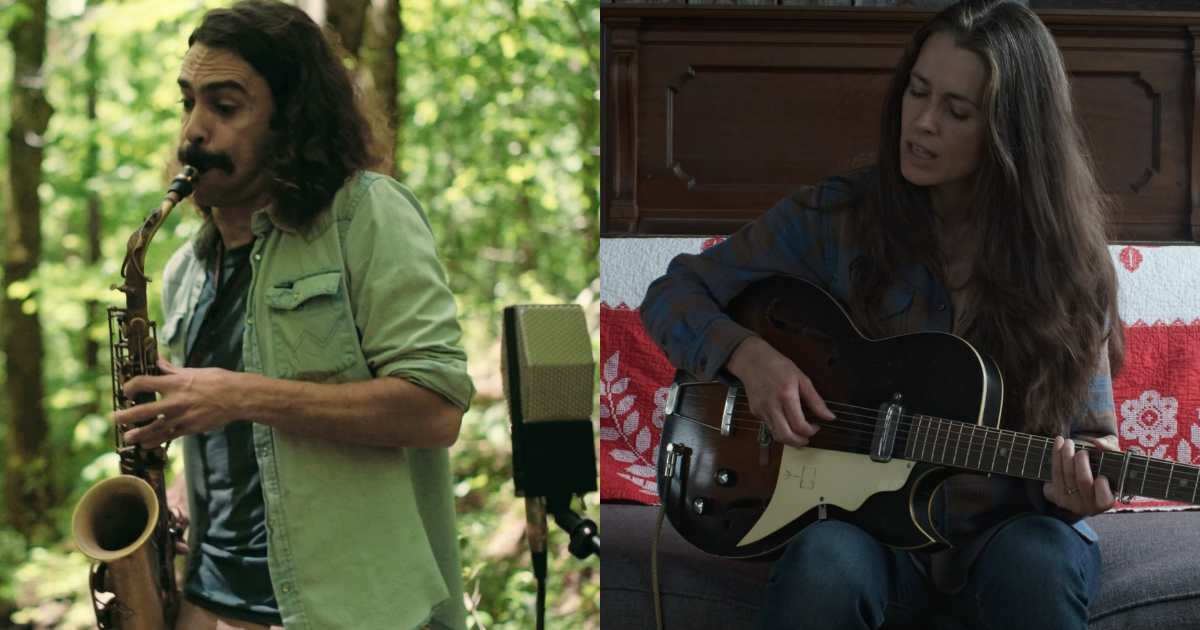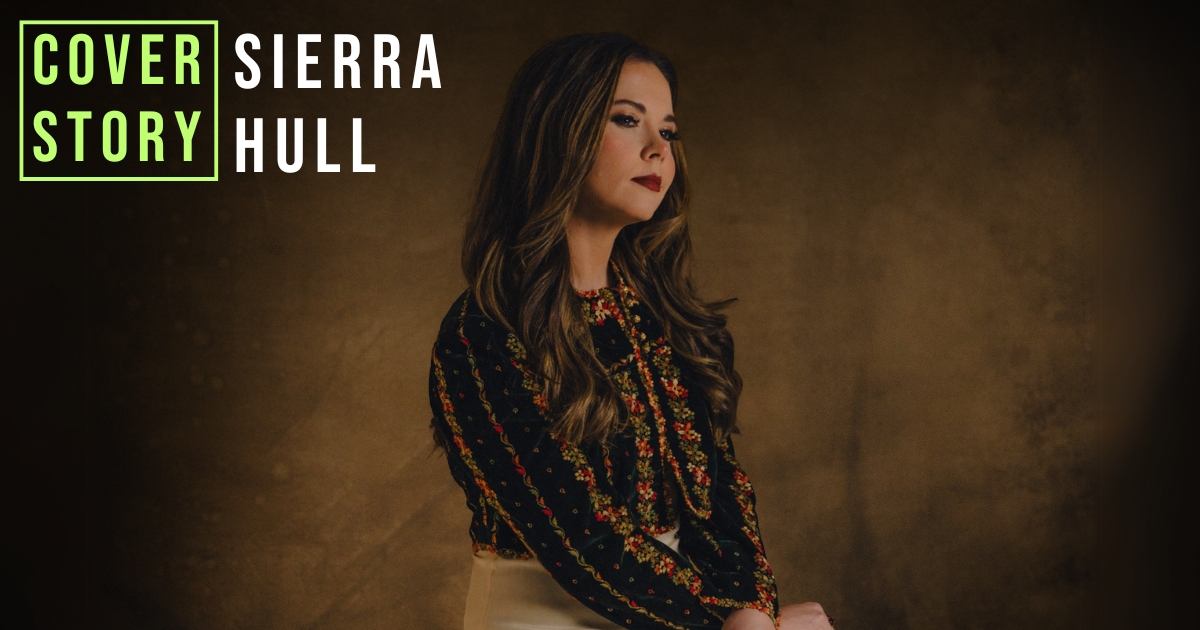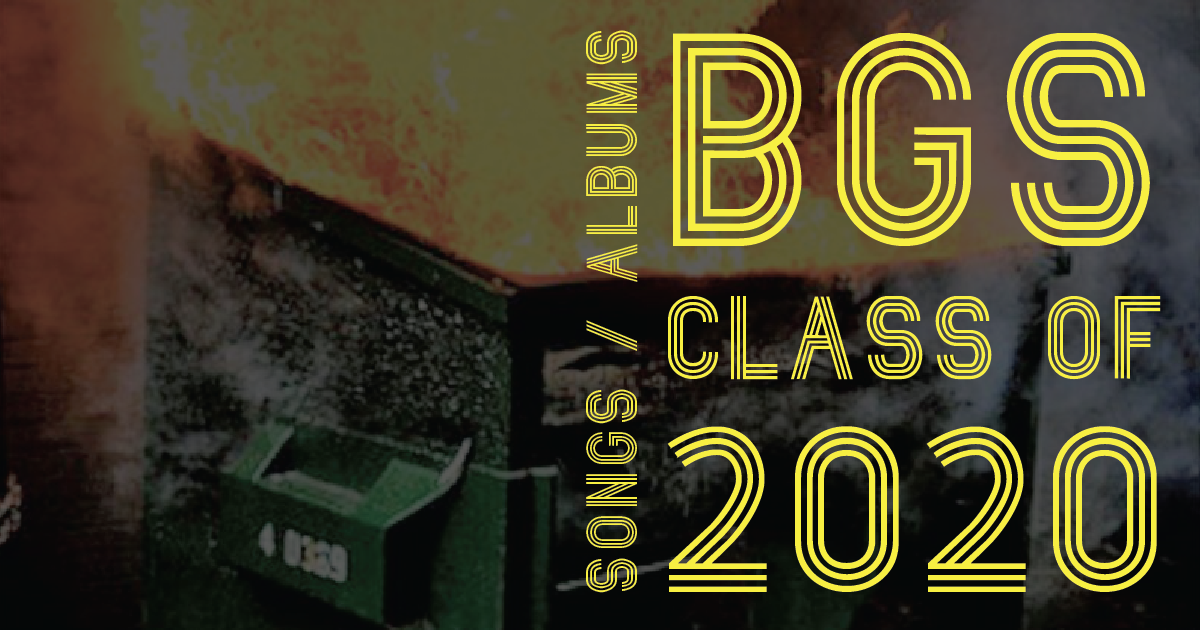You know what Friday means! New music, new songs, new videos – and of course, You Gotta Hear This.
Let’s begin with some Good Country from Idaho’s own Colby Acuff. His new album, Enjoy the Ride, is out today and we’re enjoying the ride ourselves with a lyric video for the title track from his excellent collection of country that’s both traditional and forward-looking born from beyond the continental divide. Singer-songwriter Kashena Sampson brings us a song from her brand new album, Ghost Of Me, that we find at the intersection of vibey Americana and contemplative indie. “Thick As Thieves” is a daydream in a song about teenage years, friendship, and holding onto – if you can – the ineffable magic of youth.
One of our longtime friends, Caitlin Canty, released her new album, Night Owl Envies the Mourning Dove, yesterday. Based in Vermont, the singer-songwriter crafts music that rests comfortably between folk, bluegrass, string band, and Americana sounds. To celebrate her new album, she’s shared a special live performance video of “Don’t Worry About Nothing,” inspired by parenthood, our frenetic day-to-day, and giving up control – and worry – whenever we can. Speaking of string band music, Damn Tall Buildings, a Brooklyn-based group playing on the fringes of bluegrass, old-time, and swing, have a brand new video for “Turkish Airlines,” a funny and all-too-relatable track they describe as portraying the haze of travel dreams, the desire to be seen, and late-night self-reflection.
And don’t miss your essential dose of bluegrass saxophone, as one of the foremost purveyors of the form, Eddie Barbash, begins a BGS mini-series sharing videos of solo performances of traditional fiddle tunes on sax. To begin, check out his rendition of “Forked Deer,” which Barbash picked up from Sierra Hull while touring with Cory Wong. If you aren’t familiar with Barbash, you may be surprised how perfect fiddle tunes can feel on saxophone. If you are already familiar, you’ll love getting to hear him offer his takes on these classic melodies. More sax-fiddle tunes are coming soon.
There’s a little something for everyone in this week’s roundup, as usual. We hope you enjoy, because You Gotta Hear This!
Colby Acuff, “Enjoy The Ride”
Artist: Colby Acuff
Hometown: Coeur d’Alene, Idaho
Song: “Enjoy The Ride”
Album: Enjoy The Ride
Release Date: October 3, 2025
In Their Words: “The title track of this project does not pull any punches. This song sets up the world where this story takes place. Like most of my songs, it takes place in the real world. In the plains of Oklahoma, the mountains of Idaho, or the heat of the desert. This record is for real people. People that we talked to on the streets and truly got a look into who they are. This song is meant to represent the people of this country for what it is. I hope people love this one as much as I do.” – Colby Acuff
Eddie Barbash, “Forked Deer”
Artist: Eddie Barbash
Hometown: Nashville, Tennessee
Song: “Forked Deer”
Album: Larkspur
Release Date: November 28, 2025 (The album will be released one song at a time with the last track coming out Nov. 28.)
In Their Words: “This performance was recorded in a dry streambed at the Larkspur Conservation natural burial ground in northern Tennessee. I learned ‘Forked Deer’ from Sierra Hull while we were on tour with Cory Wong. The harmonic lift in the B part is what makes the tune for me. Modulating to the 5 is a tried-and-true move at least as old as the Baroque. In my playing I tried to capture what I love most about bluegrass – the fast and hard-driving, yet still light and bouncy, groove and the thrilling rhythmic and melodic variations. To achieve the bluegrass backbeat, I made generous use of one of my favorite bowing techniques that I learned from Alex Hargreaves called the ‘Georgia shuffle bow.'” – Eddie Barbash
Video Credits: Shot and edited by Jeremy Stanley.
Caitlin Canty, “Don’t Worry About Nothing”
Artist: Caitlin Canty
Hometown: Danby, Vermont
Song: “Don’t Worry About Nothing”
Album: Night Owl Envies the Mourning Dove
Release Date: October 2, 2025
In Their Words: “I started writing this song to my son when his Magna-Tiles castle came crashing down in a spectacular heap. It felt like what was happening at that time to my view of the wider world. This song helps me wind down from worrying about what doesn’t matter so much and focus my powers on fighting for what does matter. It’s written from my own unshakeable mom’s point of view – I love how she sees the world and walks through it with a smile, even on the darkest days. I’m so looking forward to touring Night Owl Envies the Mourning Dove and playing this song each night with my full band! ” – Caitlin Canty
Video Credits: Filmed and edited by Brian Carroll. Mixed by Dave Sinko.
Damn Tall Buildings, “Turkish Airlines”
Artist: Damn Tall Buildings
Hometown: Brooklyn, New York
Song: “Turkish Airlines”
Album: The Universe Is Hungry
Release Date: October 8, 2025 (single); October 24, 2025 (album)
In Their Words: “We are honored to share this single from our fourth upcoming studio LP with BGS! ‘Turkish Airlines’ explores the sensation of being loved, but not being sure which version of you someone is loving. We’re always evolving and changing as humans, and this song floats through the uncertainty that can be triggered by that truth. We had a blast crafting this track to portray the haze of travel dreams, the desire to be seen through the complexity, and late-night self-reflection. Through creative experimentation in the recording and production of the track, we were able to bring a bit of studio magic to this song that we hope will become a DTB classic. Hit us up on the socials to let us know what you think!. Thanks for listening, see y’all on the road.” – Damn Tall Buildings
Kashena Sampson, “Thick As Thieves”
Artist: Kashena Sampson
Hometown: Nashville, Tennessee
Song: “Thick As Thieves”
Album: Ghost Of Me
Release Date: October 3, 2025
In Their Words: “I wrote this song for my best friend, Sulayla. It’s a daydream about our teenage years growing up in Las Vegas. It’s about those carefree days when the world felt full of endless possibilities. The song came to me after a conversation we had, realizing that adulthood isn’t quite what we imagined and wishing we could go back to those golden moments. Driving through the desert in my old Ford Explorer, listening to the Beatles and feeling like anything was possible.” – Kashena Sampson
Track Credits:
Kashena Sampson – Vocals, songwriter
Jolana Sampson – Songwriter
B.L. Reed – Guitar
Tom Myers – Drums
Jon Estes – Bass
Photo Credit: Eddie Barbash by Jeremy Stanley; Caitlin Canty by Brian Carroll.


